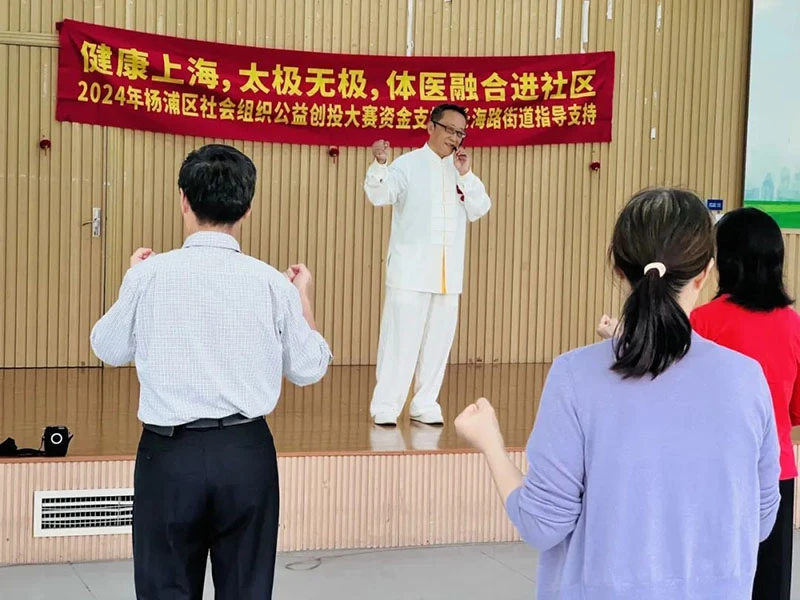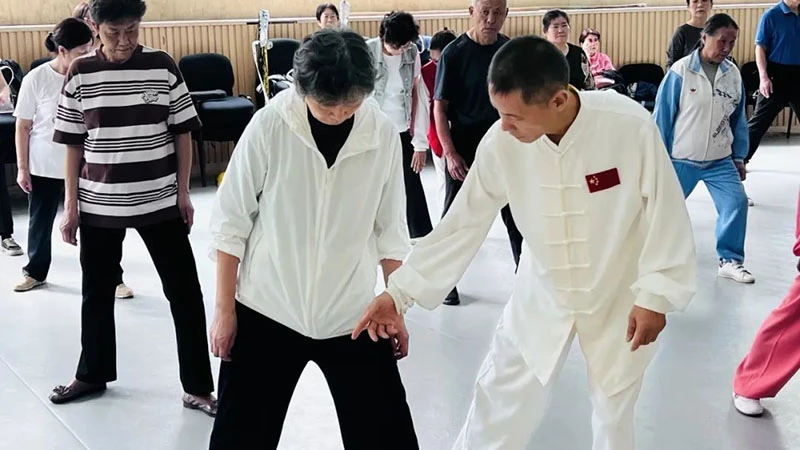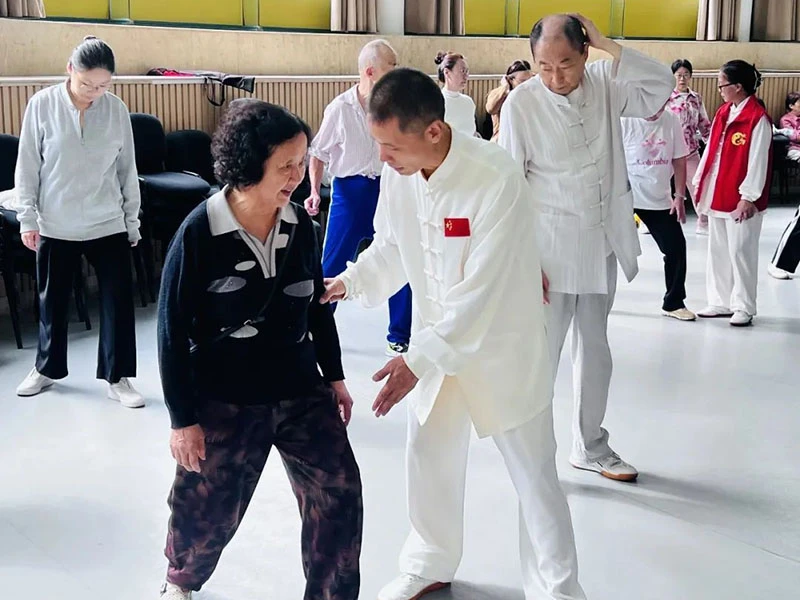Tai Chi in a Modern Community
In a bustling world where health and wellness are increasingly valued, a recent event at the Changhai (长海) Road Community Center in Shanghai sought to merge traditional wisdom with community wellness. Themed "Healthy Shanghai, Boundless Tai Chi," this event invited Tai Chi enthusiasts Lu Xuejun (鲁学军) and Nie Yonggang (聂永刚) to bring the grace and philosophy of Yang-style Tai Chi to local residents, offering not only an introduction to the ancient art but also a hands-on wellness experience that bridges body, mind, and community.
Tai Chi has long been celebrated in China for its gentle yet powerful movements, harmonizing physical health and mental well-being. Recognized as a national intangible cultural heritage, Tai Chi has become a staple in traditional Chinese culture, attracting people from all walks of life. With its slow, deliberate movements, Tai Chi fosters calm, flexibility, and strength, making it an appealing choice for a wide range of ages. The Yang style, known for its simplicity and accessibility, resonates particularly well within communities. As one of Tai Chi’s prominent styles, it emphasizes balance, straightforward forms, and a focus on health, making it both a physical exercise and a cultural treasure.

Learning the Basics
At the event, Lu Xuejun offered a foundational overview of Yang-style Tai Chi. He delved into its origins, philosophy, and unique health benefits, introducing residents to its core techniques with a focus on the art’s holistic impact on physical and mental well-being. Through a blend of verbal instruction and live demonstrations, Lu broke down some essential elements of Tai Chi, including the correct hand positions, basic fist forms, and the proper stances and footwork critical to mastering this practice. In guiding residents, Lu emphasized the importance of correct posture. For example, he highlighted the need to turn the right foot outward at a 45-degree angle while keeping the feet positioned at an “8-degree angle,” with steps spaced according to the practitioner’s height.
As participants observed and then tried the movements themselves, Lu encouraged everyone to pay attention to their form, which is central to Tai Chi. “Correct posture is the foundation of Tai Chi,” Lu reminded the group. “Without a solid stance, we risk missing out on Tai Chi’s benefits and the harmony it brings.”
Residents also had the chance to practice three forms from the classic Yang-style 16-move sequence. Both instructors offered individual feedback to ensure that each participant could engage with the movements correctly. This personalized guidance inspired participants, many of whom were trying Tai Chi for the first time, and fostered a palpable excitement throughout the room.
Tai Chi’s Appeal and Impact on Community Health
For many participants, this event marked their first experience with Tai Chi. Among them was Auntie Chen, an enthusiastic attendee who shared her excitement: “I’ve always been interested in fitness and have seen my neighbors practice Tai Chi regularly. Now, I finally get to try it myself. It’s simpler than I thought, fun, and seems to bring so many benefits. I’m eager to continue learning!”
This Tai Chi-themed gathering was more than just a fitness activity—it offered a way to foster greater physical and mental wellness within the community. By introducing residents to a culturally rich and practical health practice, the event also reinforced bonds among community members, promoting a sense of unity and shared well-being. Moreover, the initiative aligns with the community center’s mission of promoting holistic health through culturally meaningful and accessible programming.
The Changhai Road Community Center plans to host more wellness events aimed at enriching the lives of residents. Through a variety of programs and workshops, they hope to continue meeting the growing demand for health-oriented activities while fostering a supportive and harmonious environment for all members.



